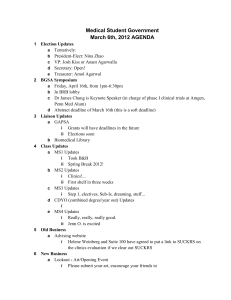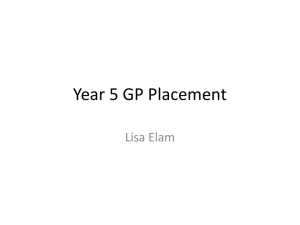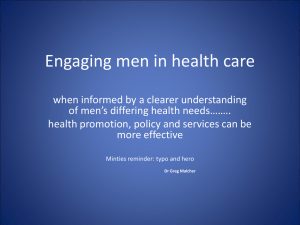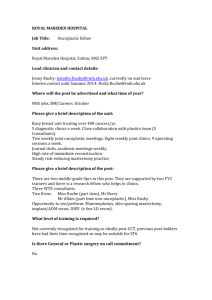Title: Health-Line Medical Call Center Using Cellular Phone
advertisement
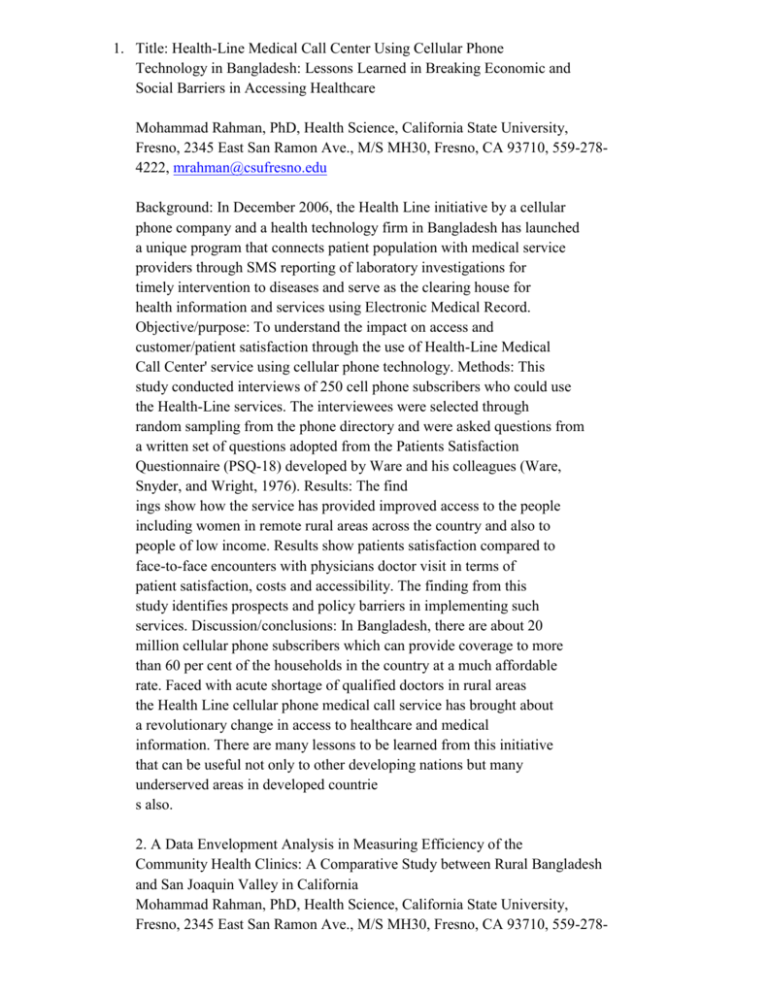
1. Title: Health-Line Medical Call Center Using Cellular Phone Technology in Bangladesh: Lessons Learned in Breaking Economic and Social Barriers in Accessing Healthcare Mohammad Rahman, PhD, Health Science, California State University, Fresno, 2345 East San Ramon Ave., M/S MH30, Fresno, CA 93710, 559-2784222, mrahman@csufresno.edu Background: In December 2006, the Health Line initiative by a cellular phone company and a health technology firm in Bangladesh has launched a unique program that connects patient population with medical service providers through SMS reporting of laboratory investigations for timely intervention to diseases and serve as the clearing house for health information and services using Electronic Medical Record. Objective/purpose: To understand the impact on access and customer/patient satisfaction through the use of Health-Line Medical Call Center' service using cellular phone technology. Methods: This study conducted interviews of 250 cell phone subscribers who could use the Health-Line services. The interviewees were selected through random sampling from the phone directory and were asked questions from a written set of questions adopted from the Patients Satisfaction Questionnaire (PSQ-18) developed by Ware and his colleagues (Ware, Snyder, and Wright, 1976). Results: The find ings show how the service has provided improved access to the people including women in remote rural areas across the country and also to people of low income. Results show patients satisfaction compared to face-to-face encounters with physicians doctor visit in terms of patient satisfaction, costs and accessibility. The finding from this study identifies prospects and policy barriers in implementing such services. Discussion/conclusions: In Bangladesh, there are about 20 million cellular phone subscribers which can provide coverage to more than 60 per cent of the households in the country at a much affordable rate. Faced with acute shortage of qualified doctors in rural areas the Health Line cellular phone medical call service has brought about a revolutionary change in access to healthcare and medical information. There are many lessons to be learned from this initiative that can be useful not only to other developing nations but many underserved areas in developed countrie s also. 2. A Data Envelopment Analysis in Measuring Efficiency of the Community Health Clinics: A Comparative Study between Rural Bangladesh and San Joaquin Valley in California Mohammad Rahman, PhD, Health Science, California State University, Fresno, 2345 East San Ramon Ave., M/S MH30, Fresno, CA 93710, 559-278- 4222, mrahman@csufresno.edu There is much similarity in health status, healthcare infrastructure and availability of healthcare providers among rural Bangladesh and the rural counties in the Central Valley in California. This study presents a comparative efficiency analysis of health clinics in Bangladesh and community health clinics in the San Joaquin Valley in California. This analysis aimed to: 1) assess the status of the health care services provided by these clinics in terms of their technical efficiency; 2) explore the potential cost-savings by eliminating inefficiency; and 3) examine what factors contributed to the inefficiencies in order to draw parallels in their performance and identify lessons that could be learned from each others experience. The study used the Data Envelopment Analysis (DEA) technique to evaluate the efficiency of 202 health clinics located in Bangladesh and 90 health clinics in the Central Valley. The data for health clinics were obtained from the Survey of Private Medica l Clinics in Bangladesh and ALIRTS database from OSHPD. The Banker Charnes and Cooper model, which measures technical efficiency, was used under the assumption that the clinics may not be operating at the optimal scale level. After the efficiency measures were determined through the DEA model, the efficiency scores were regressed on some explanatory variables to test hypotheses using Tobit analysis. The findings from the study showed major differences in efficiency among the clinics in the two areas and could be explained by various environmental factors and existing managerial practices. The study asserts that there is a scope for cutting cost and improving efficiency if a number of management changes are mandated on the clinics. It can also been deduced from the analysis that shortages of health care providers in these regions is a major impediment in achieving efficient capacity at the health centers. The study recommends changes in a number of managerial practices to impr ove performance at the clinics in both regions. The study also recommends various policy changes that can influence how clinics compete and cooperate among each other. There are several lessons that clinic managers in one region can learn from the other in terms of resource mix and services provided. Mohammad Rahman Asst. Professor Department of Health Sciences California State University, Fresno Tel: 559-278-4222

